It's a Slow Road to Rear-view Video, but Magna Says It's Ready

Even though automakers routinely preview concept and prototype vehicles with camera mounts replacing traditional side and rear-view mirrors, you’ll have to wait a while before the technology makes its way to production vehicles. While Japan thinks ditching mirrors for a digital display is sugoi (Japanese for hunky-dory), other nations have maintained some amount of trepidation in embracing the technology.
For our purposes, both Canada and the United States have examined the matter, yet neither feels ready to make any industry-altering decisions. Supplier Magna International says that’s okay — it’ll be ready to hook up North America with the applicable hardware when the time comes. Plenty of downsides can be found in swapping out traditional mirrors, offsetting some of the benefits, and lawmakers need to figure out how to manage that when it comes time to redefine automotive regulations.
Most states require vehicles have at least one mirror to be deemed eligible for driving on American roads; however, the Federal Motor Vehicle Safety Standards stipulate they be manufactured with both side and rearview mirrors. What you do after that is up to you and the state you’re driving in. Canada is a little less breezy, requiring at least one mirror in all provinces. Still, both have considered what it might take to swap to camera-based systems over the last decade.
In the United States, the initial push into autonomy made the issue difficult to ignore. AVs are highly reliant on sensor equipment, including cameras, and the National Highway Traffic Safety Administration (NHTSA) has been trying to embrace new technologies to give the industry some leeway to blast off into A Safer Future™. As you undoubtedly know from reading this site, self-driving cars have seemingly gotten themselves trapped in a development vortex. But the accompanying hardware has not.
Back in August, the NHTSA announced it would begin testing the viability of cameras against traditional mirrors. However, while the U.S. is focusing primarily on safety, Canucks have taken a slightly different approach. In 2013, Transport Canada surmised that lower-profile cameras offered a “significant reduction in fuel consumption and CO2 emissions from the heavy-duty-vehicle sector.” The nation moved to amend Motor Vehicle Safety Regulations Schedule 111 in an attempt to legalize camera-based systems a few years later, but nothing ever came of it.
Ontario-based Magna seems hip to the situation and already has products is believes offer the best of both worlds. “We’re well-suited for the future when that trend comes, but we see it as a slow, slow adoption at the moment,” Keith Foote, vice-president of engineering with Magna Mirrors of America, told Automotive News this week.
In the fall, the supplier showed off its newest “mirror.” Developed with help from Gentex Corp, Magna’s latest ClearView system allows drivers to swap between traditional reflection and panoramic live feed. While it offers mirror-free hardware in other parts of the world (e.g. Japan and Europe), providing a traditional reflective surface that can double as a camera feed should allow it to be sold in the U.S. and Canada.
It also helps circumvent some of the less pleasant aspects of having no mirrors. Despite offering a wider view of the world and the ability to network with advanced driving aids, camera systems have their drawbacks. One of the largest is a camera’s inability to show you more than a single perspective. With mirrors, you can reposition your head to give you a slightly better view of what’s behind you. This encourages you to look around more, covering your blind spots and providing better situational awareness.
Camera displays lose their edge at night, as well. A crisp screen image can turn into a low-resolution mess after the sun goes down. Your eyes also have to adjust as they travel between illuminated displays and the road ahead, creating totally unique issues whenever the settings are too bright. However, the biggest problem for consumers is probably complexity and cost. Whereas a mirror can be installed or repaired rather cheaply, camera systems cannot. They can also be more easily obscured by roadway grime and precipitation, as anybody who has ever used a reverse camera in the middle of a snowy winter already knows.
Magna believes its dual setup avoid mosts of these headaches and should satisfy laws that require the use of traditional mirrors. ClearView offers a regular interior mirror, with the ability to swap to camera monitoring on the fly, and a side view mirror with a camera that permits a second video feed to be sent to a small screen mounted on the front pillar. While not yet in series production, Magna expects 0.5 percent of global vehicles to use its camera technology by 2025. The company said that low figure is largely down to some of its biggest markets being regulatory holdouts.
While we’re not certain if the advantages of camera monitoring actually trump old-school mirrors, they’re likely to become normalized within the industry as the technology improves. Right now, they’re just medium-quality displays with advanced blind-spot monitoring capabilities and night vision (sometimes). But automakers continue playing with them, with a few (Lexus and Audi) attaching them to production vehicles in select markets. They may prove invaluable a decade from now, but we’re not prepared to make that guarantee here in 2020.
[Images: Magna International, Lexus]

A staunch consumer advocate tracking industry trends and regulation. Before joining TTAC, Matt spent a decade working for marketing and research firms based in NYC. Clients included several of the world’s largest automakers, global tire brands, and aftermarket part suppliers. Dissatisfied with the corporate world and resentful of having to wear suits everyday, he pivoted to writing about cars. Since then, that man has become an ardent supporter of the right-to-repair movement, been interviewed on the auto industry by national radio broadcasts, driven more rental cars than anyone ever should, participated in amateur rallying events, and received the requisite minimum training as sanctioned by the SCCA. Handy with a wrench, Matt grew up surrounded by Detroit auto workers and managed to get a pizza delivery job before he was legally eligible. He later found himself driving box trucks through Manhattan, guaranteeing future sympathy for actual truckers. He continues to conduct research pertaining to the automotive sector as an independent contractor and has since moved back to his native Michigan, closer to where the cars are born. A contrarian, Matt claims to prefer understeer — stating that front and all-wheel drive vehicles cater best to his driving style.
More by Matt Posky
Latest Car Reviews
Read moreLatest Product Reviews
Read moreRecent Comments
- 3-On-The-Tree My 2009 C6 corvette in black looks great when it’s all washed and waxed but after driving down my 1.3 mile long dirt road it’s a dust magnet. I like white because dust doesn’t how up easily. Both my current 2021 Tundra and previous 2014 Ford F-150 3.5L Ecobomb are white
- Bd2 Would be sweet on a Telluride.
- Luke42 When will they release a Gladiator 4xe?I don’t care what color it is, but I do care about being able to plug it in.
- Bd2 As I have posited here numerous times; the Hyundai Pony Coupe of 1974 was the most influential sports and, later on, supercar template. This Toyota is a prime example of Hyundai's primal influence upon the design industry. Just look at the years, 1976 > 1974, so the numbers bear Hyundai out and this Toyota is the copy.
- MaintenanceCosts Two of my four cars currently have tires that have remaining tread life but 2017 date codes. Time for a tire-stravaganza pretty soon.



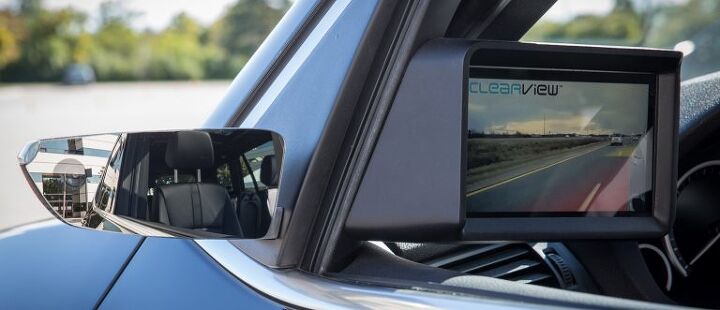


















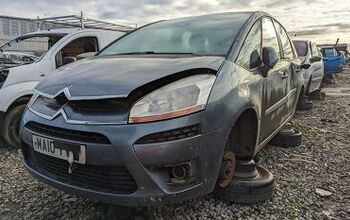


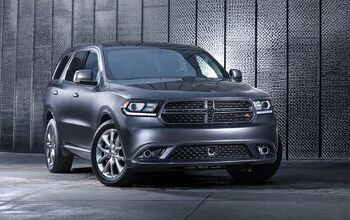
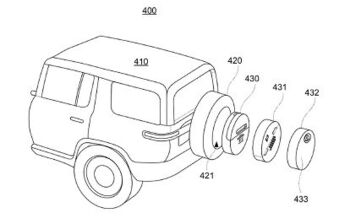
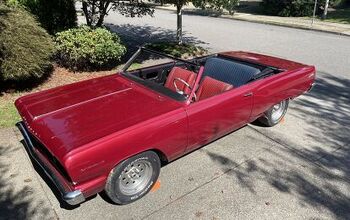
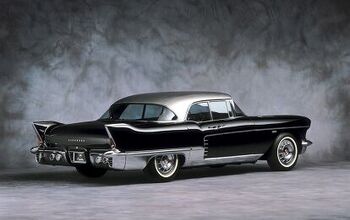
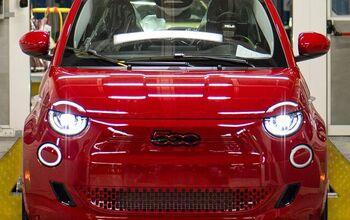
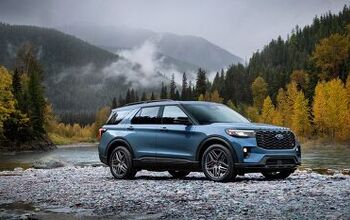

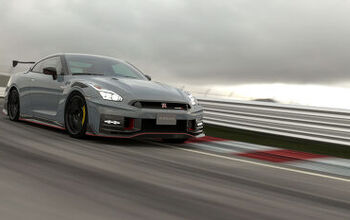


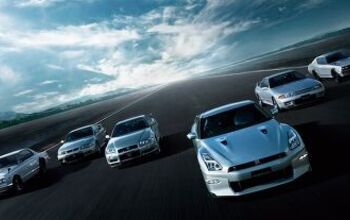
Comments
Join the conversation
The back up camera in my Mustang was dead at less than 3 years old. It was still under warranty when I sold it, so I didn't have to deal with the cost of replacing it. In a world where dealerships want hundreds of dollars just to program a key, how many cars are going to go to the junkyard because it's not cost-effective to replace one of the four cameras required to be on future cars? Annual safety inspections will take plenty of functional cars off the road. Maybe that's part of the plan. Too many poor folks driving reliable old junkers when they should be riding the bus and experiencing all the diversity and culture the city has to offer.
""What made the Super Beetle so super, you ask? Futuristic McPherson struts in the front, plus a few other changes that didn’t seem to make the Super drive much better than the regular Beetle"" It was really a completely different car. The main changes to the suspension were at the back - the lethal swing axle suspension was replaced with a trailing arm set-up adapted from the Porsche. This vehicle won a number of Touring Car championships until the rules were changed to keep it out of the competition.